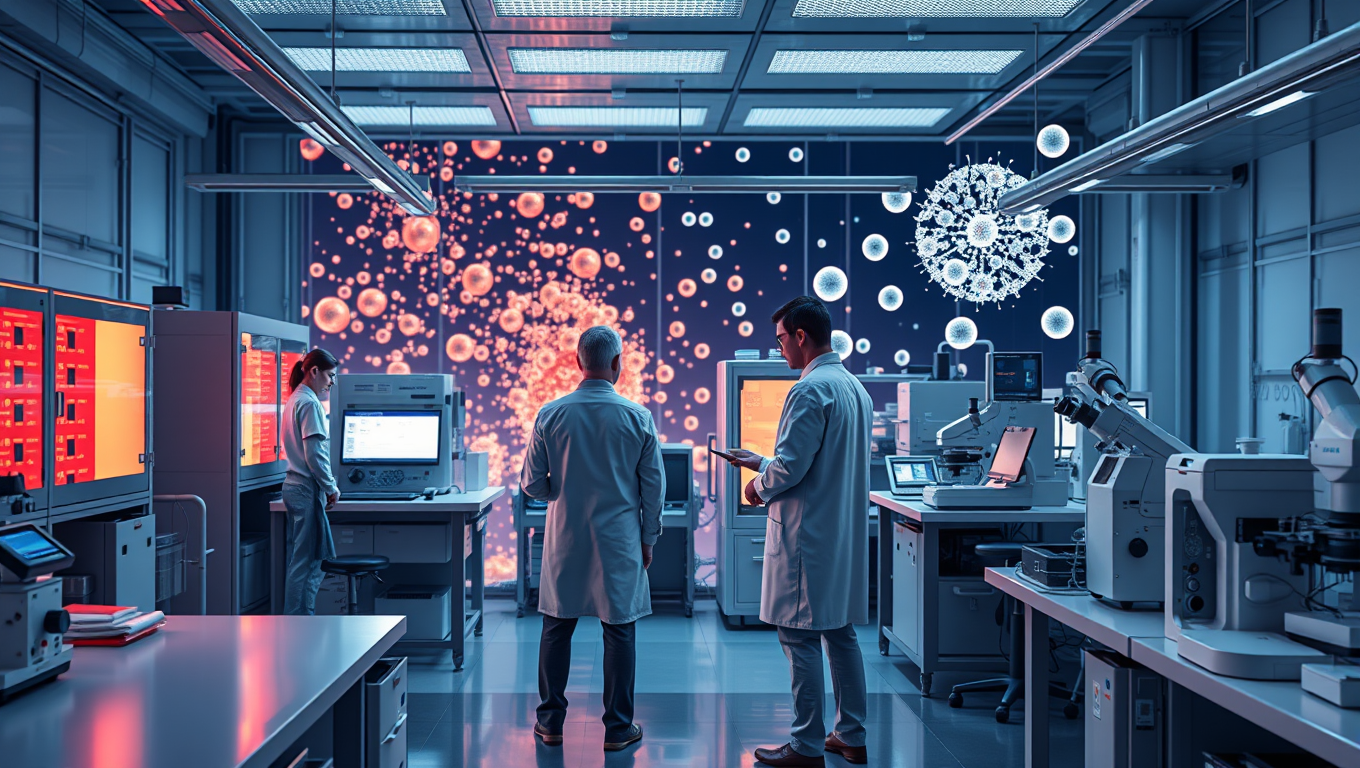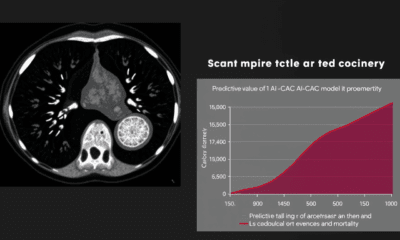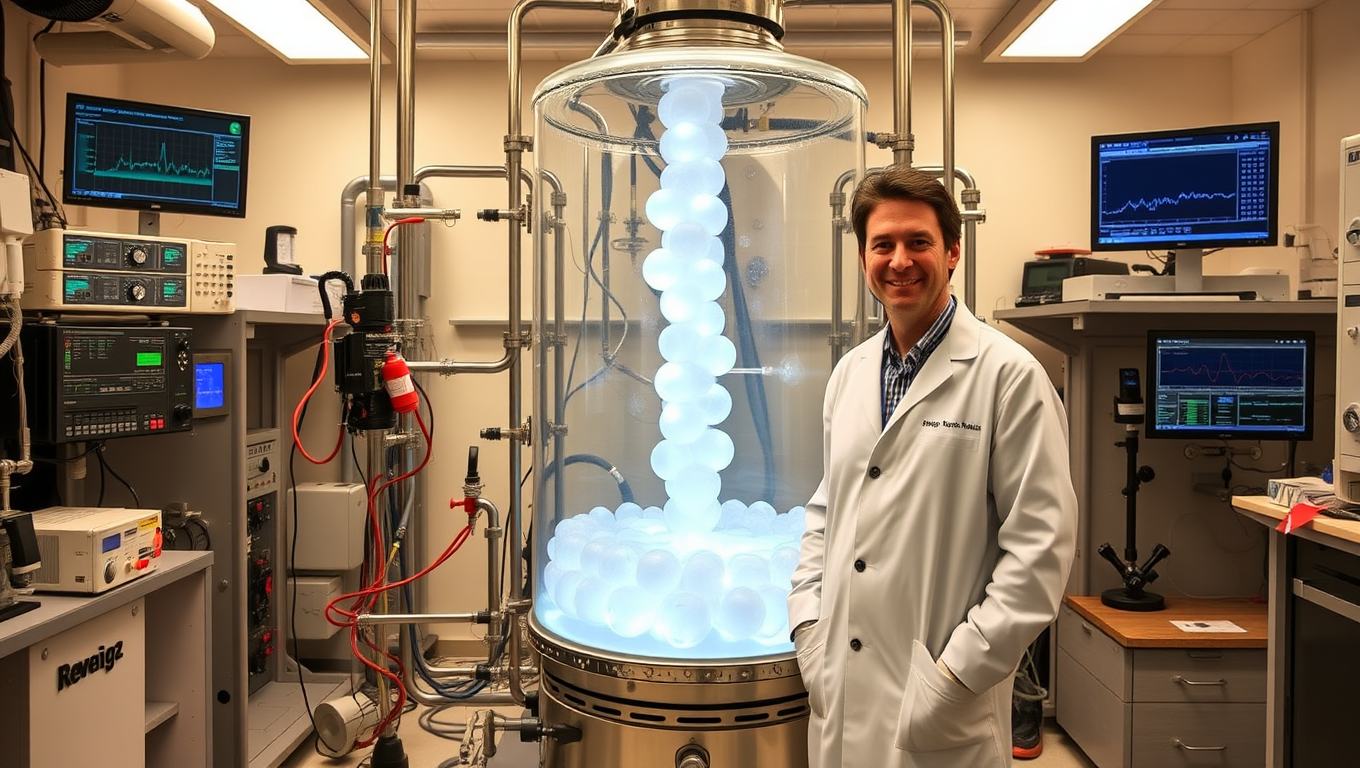While we try to keep things accurate, this content is part of an ongoing experiment and may not always be reliable.
Please double-check important details — we’re not responsible for how the information is used.
Chemistry
“Revolutionizing Quantum Dots Production: A Leap Forward in Sustainability”
Researchers have developed a pioneering, sustainable method for producing cadmium-based quantum dots (QDs) in water using a biocompatible chalcogen source. This fully aqueous, continuous flow process avoids harmful organic solvents and offers enhanced safety, scalability, and environmental performance. A collaboration led to the creation of a water-soluble chalcogen transfer agent inspired by peptide chemistry. Real-time Raman spectroscopy enabled detailed analysis of reaction mechanisms. The new system improves productivity while reducing waste and energy use. Although cadmium QDs are efficient, their toxicity remains a concern, prompting the team to explore greener alternatives. This innovation marks a significant step toward responsible, large-scale nanomaterial production.

Chemistry
Revolutionizing Magnetic Field Technology: A Breakthrough Design for MRI and Magnetic Levitation
Two German physicists have reimagined how to create powerful and uniform magnetic fields using compact permanent magnets. By overcoming the limitations of the well-known Halbach array, which works only with infinitely long magnets, they engineered innovative 3D magnet arrangements that work in practical, finite-size setups. Their designs not only boost field strength but also enhance homogeneity, verified through real-world experiments. This game-changing advancement could help bring affordable MRI technology to underserved regions and power applications like particle accelerators and magnetic levitation systems.
Chemistry
Breakthrough at Rice University Keeps CO2 Electrolyzers Running 50x Longer with a Surprisingly Simple Method
A Rice University team discovered that bubbling CO₂ through a mild acid dramatically improves the lifespan and efficiency of electrochemical devices that convert CO₂ into useful fuels. This simple trick prevents salt buildup—a major barrier to commercialization—by altering local chemistry just enough to keep salts dissolved and flowing. The result? A device that ran for over 4,500 hours without clogging, using common catalysts and scalable technology. It’s a breakthrough that could make green CO₂ conversion far more viable in the real world.
Chemistry
“Rewriting Chemistry with Light: A Breakthrough in Fossil Fuel Transformation”
Researchers at Colorado State University have developed a new photoredox catalysis system that uses visible light mimicking photosynthesis to drive energy-intensive chemical reactions at room temperature. This groundbreaking process could significantly reduce the energy required in chemical manufacturing, especially in industries reliant on fossil fuels.
-

 Detectors3 months ago
Detectors3 months agoA New Horizon for Vision: How Gold Nanoparticles May Restore People’s Sight
-

 Earth & Climate4 months ago
Earth & Climate4 months agoRetiring Abroad Can Be Lonely Business
-

 Cancer3 months ago
Cancer3 months agoRevolutionizing Quantum Communication: Direct Connections Between Multiple Processors
-

 Agriculture and Food3 months ago
Agriculture and Food3 months ago“A Sustainable Solution: Researchers Create Hybrid Cheese with 25% Pea Protein”
-

 Diseases and Conditions4 months ago
Diseases and Conditions4 months agoReducing Falls Among Elderly Women with Polypharmacy through Exercise Intervention
-

 Chemistry3 months ago
Chemistry3 months ago“Unveiling Hidden Patterns: A New Twist on Interference Phenomena”
-

 Earth & Climate3 months ago
Earth & Climate3 months agoHousehold Electricity Three Times More Expensive Than Upcoming ‘Eco-Friendly’ Aviation E-Fuels, Study Reveals
-

 Albert Einstein4 months ago
Albert Einstein4 months agoHarnessing Water Waves: A Breakthrough in Controlling Floating Objects





























